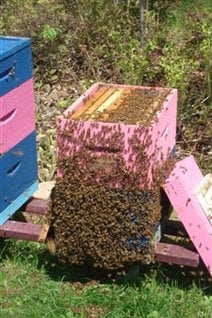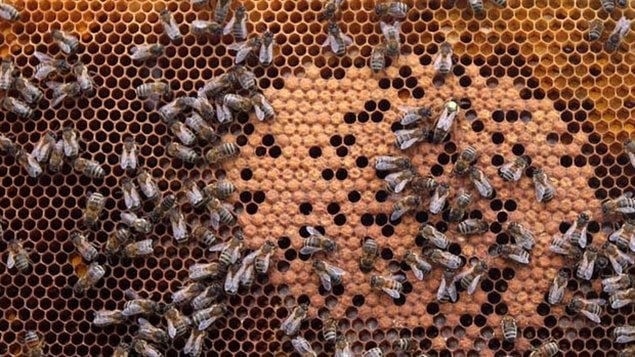Beekeepers across Canada are reporting continuing losses as warmer spring weather arrives and hives become more active.
Normally, winter losses would represent about 5-10% of a colony, with a bad year up to 15%, but since 2007 the annual losses have been greater.

Paul Vautour of New Brunswick, is director of the Maritime Beekeepers Association and is the Maritime representative on the Canadian Honey Council
ListenMr Vautour says his members are reporting an average bee loss of 25% this spring. He says his own bees did far worse with up to 80% loss.
On Prince Edward Island, losses are also very high, but Nova Scotian apiculturists reported much lower losses at around 15%
Mr Vautour points out the bees are critical to pollinate crops. He says with the losses, up to 20,000 hives have to be brought in to New Brunswick alone from Ontario and Quebec at a cost to growers of about $125 per hive, which represents from $2-3 million dollars.
In British Columbia, Fraser Valley apiculturists are reporting up to 50% die-off, and across the country losses are reported to be higher than usual once again this year.

With substantial colony collapse, queen bees will have to be brought in from as far away as New Zealand, Hawaii, and Chile. The strongest surviving hives are then divided and a new queen added to one of the separated hives.
As to what is causing the on-going bee deaths, there are many possible causes ranging from mites, to fungus and other disease, to poisoning from pesticides, or combinations of any or all possibilities. Some theorize that even very low doses of pesticides weaken the bees making them vulnerable to mites and disease, or they become disoriented, uncoordinated and starve.
Europe recently announced a 2-year moratorium on nicotinoid crop pesticides saying there was a likely link between the poisons and bee colony deaths in Europe. There are also calls in Canada to follow suit on banning the nicotine-based pesticides used often on corn and canola crops.
Mr Vautour notes also that here in Canada, climate change seems to be having an adverse effect as well. Drought at the end of last summer resulted in little honey-making nectar coming into the colonies. The new bees that emerge in the early fall that will live in the hives throughout the winter are left at a disadvantage, with less honey to sustain them over the winter He adds climate that though this past winter wasn’t particularly cold, it was drawn-out. Bees are one of the few insect species to remain active over the winter. In colder winter months, bees eat the honey produced throughout the summer, then form clusters to stay warm. Long, cold spells force bees to stay together to stay warm, keeping them from moving around and feeding on honey stores.
In Ontario where there is a large corn production, there is more concern about pesticide use.

Tibor Szabo vice-president of the Ontario Beekeepers Association says that the problem lies with the way the pesticides are applied. The chemical is highly water soluble and can remain in the water and soil for up to three years. That is how beekeepers think the bees are getting poisoned. “Orally, 3.68 parts per billion can kill 250 million bees,” Szabo says. ”Once we have certain levels, we won’t have bee life. “This is a disaster in the making.”
How these nicotine-based poisons affect bees varies. Studies have found that it has multiple effects including disorienting bees, reducing disease resistance and making them less effective while foraging.
Meanwhile, due to a shortage of bees in Eastern Canada, the Canadian Horticultural Council is asking the Canadian Government to allow for the use of bees from the United States to pollinate low bush blueberries. The Canadian and US government have disallowed the movement of bees either way across the border since the late 1980’s arising from the fear of spreading the Varroa mite from the US into Canada.







For reasons beyond our control, and for an undetermined period of time, our comment section is now closed. However, our social networks remain open to your contributions.